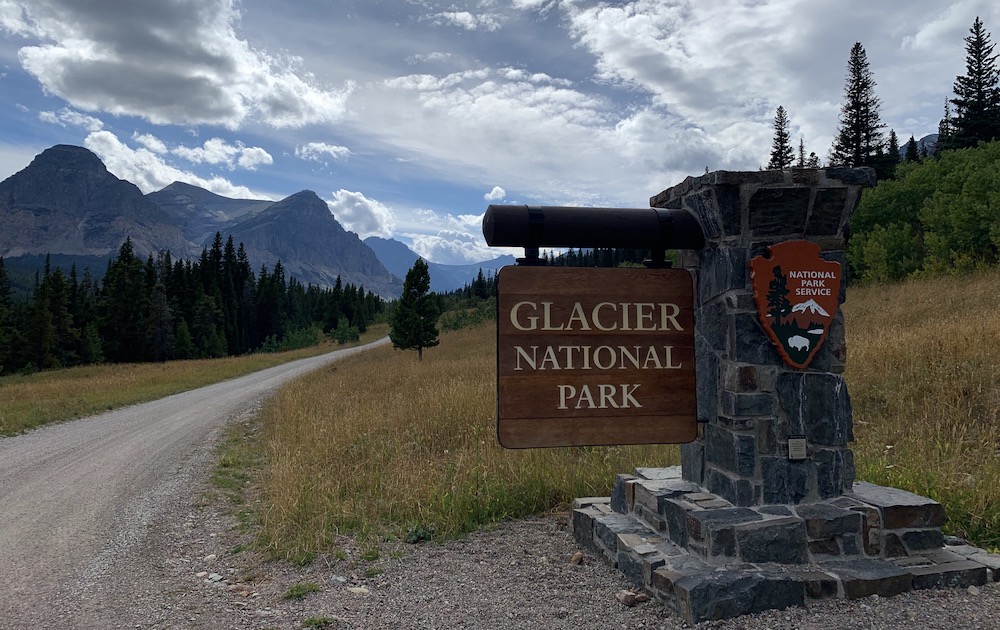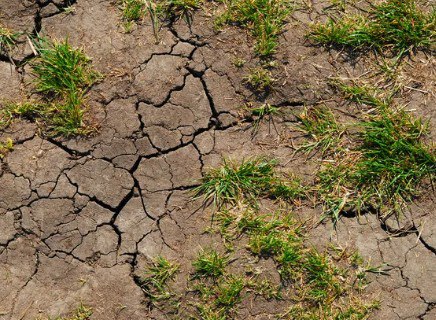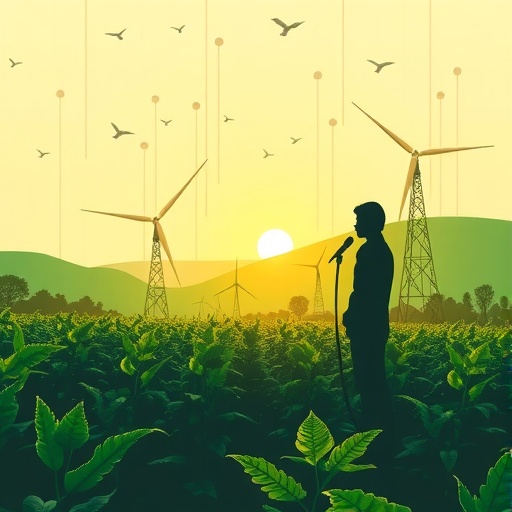The Great American Outdoors Act: Five years of transforming public lands – Bureau of Land Management (.gov)

Report on the Great American Outdoors Act (GAOA) and its Contribution to Sustainable Development Goals
Legislative Overview and Sustainable Development Framework
- The Great American Outdoors Act (GAOA), signed into law on August 4, 2020, represents a landmark legislative commitment to conservation and public land management in the United States.
- The act provides dedicated funding to federal agencies, including the Bureau of Land Management (BLM), National Park Service, U.S. Fish and Wildlife Service, U.S. Forest Service, and Bureau of Indian Education.
- Financed by energy development revenues, GAOA investments directly support the achievement of multiple United Nations Sustainable Development Goals (SDGs) by enhancing environmental stewardship, promoting economic prosperity, and ensuring community well-being.
Advancing SDG 15 (Life on Land) and SDG 3 (Good Health and Well-being)
- GAOA directly addresses SDG 15 by funding the conservation and restoration of terrestrial ecosystems. It established the National Parks and Public Land Legacy Restoration Fund (LRF) to address deferred maintenance on public lands.
- Between 2021 and 2025, the BLM received $475 million in LRF funding to ensure its roads, trails, campgrounds, and visitor centers are safe and accessible, which promotes public health and well-being (SDG 3) through outdoor recreation.
Key Restoration Projects Supporting SDG 15:
- Chimney Rock Campground, Oregon: A comprehensive renovation project improved public access and safety. This included upgrading day-use areas, trails, parking, and installing an ADA-accessible fishing platform, which also supports SDG 10 (Reduced Inequalities).
- Moab Recreation Area, Utah: LRF funding was utilized to address critical drainage issues and repair flash flood damage at popular recreation sites, ensuring the long-term sustainability and resilience of the local ecosystem.
- Big Hole Recreation Site, Montana: Investments in paving parking areas and reinforcing boat ramps have created safer, more durable river access points, reducing long-term maintenance costs and environmental impact while supporting sustainable tourism.
Supporting SDG 11 (Sustainable Cities and Communities) and SDG 13 (Climate Action)
- The GAOA has been instrumental in supporting wildfire management, a critical component of climate action (SDG 13) and building resilient communities (SDG 11).
- By funding infrastructure for wildland fire management, the act helps protect communities, natural habitats, and cultural resources from the increasing risk of wildfires.
Key Infrastructure Projects Supporting SDG 11 and SDG 13:
- Grand Junction Air Center, Colorado: An LRF-funded project is replacing structurally deficient buildings and repairing the air tanker base to comply with Federal Aviation Administration standards, enhancing national wildland fire support capabilities and operational safety.
- National Interagency Fire Center (NIFC): GAOA funding supported major renovations to the nation’s primary wildland firefighting support center. Upgrades included installing an uninterruptible power system for the computer center, renovating administrative facilities to meet safety codes, and replacing the airfield tarmac to support heavy aircraft used in fire suppression. These actions strengthen national resilience to climate-related disasters.
Driving SDG 8 (Decent Work and Economic Growth)
- GAOA investments stimulate local economies by enhancing public land infrastructure, which attracts visitors and promotes sustainable tourism, a key target of SDG 8.
- Improved facilities and access to public lands support local businesses and create employment opportunities in communities across the American West.
- In Fiscal Year 2023, recreation on BLM-managed public lands contributed significantly to local economies, generating $11.8 billion in economic output and supporting 76,000 jobs.
Conclusion: Five-Year Impact Assessment
- In the five years since its enactment, the Great American Outdoors Act has proven to be a powerful tool for advancing a sustainable development agenda.
- By strategically investing in conservation, recreation infrastructure, climate resilience, and local economies, the GAOA helps preserve America’s natural heritage while ensuring that public lands remain vibrant, accessible, and economically beneficial for current and future generations.
Which SDGs are addressed or connected to the issues highlighted in the article?
-
SDG 8: Decent Work and Economic Growth
The article highlights that the Great American Outdoors Act (GAOA) boosts local economies by attracting visitors to public lands, which supports local businesses and creates jobs. It explicitly states that recreation on these lands contributed significantly to economic output and employment.
-
SDG 9: Industry, Innovation and Infrastructure
The GAOA funds the repair, maintenance, and upgrading of infrastructure on public lands. The article details numerous projects, such as renovating campgrounds, repairing roads, replacing unsafe buildings, and modernizing facilities like the National Interagency Fire Center (NIFC), which aligns with developing quality, reliable, and resilient infrastructure.
-
SDG 11: Sustainable Cities and Communities
The act focuses on improving public access to green spaces. The article mentions making facilities “safe and accessible for the public” and provides a specific example of an “ADA-accessible fishing platform,” which directly relates to providing universal access to public spaces for all, including persons with disabilities.
-
SDG 13: Climate Action
The article discusses how GAOA funding supports wildfire management and prevention in response to “increasing wildfire risks across the West.” By strengthening wildland fire support infrastructure, the act helps build resilience and adaptive capacity to climate-related hazards like wildfires.
-
SDG 15: Life on Land
The central theme of the article is the conservation and protection of public lands and waters. The GAOA is described as a “historic moment for outdoor recreation and conservation” aimed at “sustaining the health and productivity of America’s public lands for current and future generations,” which directly supports the conservation and sustainable use of terrestrial ecosystems.
What specific targets under those SDGs can be identified based on the article’s content?
-
SDG 8: Decent Work and Economic Growth
- Target 8.9: “By 2030, devise and implement policies to promote sustainable tourism that creates jobs and promotes local culture and products.” The article explains that the GAOA’s investments in public lands “attract visitors, which in turn supports local businesses and creates jobs,” directly promoting sustainable tourism as a driver of economic growth.
-
SDG 9: Industry, Innovation and Infrastructure
- Target 9.1: “Develop quality, reliable, sustainable and resilient infrastructure… to support economic development and human well-being, with a focus on affordable and equitable access for all.” The article describes the National Parks and Public Land Legacy Restoration Fund (LRF) being used to address deferred maintenance on “roads, trails, campgrounds, visitor centers, and other assets and facilities” to ensure they are safe and accessible.
-
SDG 11: Sustainable Cities and Communities
- Target 11.7: “By 2030, provide universal access to safe, inclusive and accessible, green and public spaces, in particular for women and children, older persons and persons with disabilities.” The article supports this target by mentioning projects that “improve public access and safety,” such as the renovation of the Chimney Rock Campground, which included an “ADA-accessible fishing platform.”
-
SDG 13: Climate Action
- Target 13.1: “Strengthen resilience and adaptive capacity to climate-related hazards and natural disasters in all countries.” The article details how GAOA funding is used for “supporting wildfire management and prevention.” Projects like replacing “structurally deficient, hazardous, and unsafe buildings” at the Grand Junction Air Center and upgrading the National Interagency Fire Center (NIFC) enhance the nation’s capacity to respond to wildfires, a significant climate-related hazard.
-
SDG 15: Life on Land
- Target 15.1: “By 2020, ensure the conservation, restoration and sustainable use of terrestrial and inland freshwater ecosystems and their services…” The entire premise of the GAOA, as described in the article, is “enhancing outdoor recreation and conservation” and “sustain[ing] the health and productivity of America’s public lands.” The projects mentioned, such as the renovation of sites along the “Crooked Wild and Scenic River,” exemplify efforts to conserve and restore these ecosystems.
Are there any indicators mentioned or implied in the article that can be used to measure progress towards the identified targets?
-
SDG 8: Decent Work and Economic Growth
- Indicator (Implied): The article provides specific economic data that can serve as indicators for Target 8.9. It states that “recreation on BLM-managed public lands contributed $11.8 billion in economic output and supported 76,000 jobs in Fiscal Year 2023.” These figures directly measure the economic impact of tourism on these lands.
-
SDG 9: Industry, Innovation and Infrastructure
- Indicator (Implied): Progress towards Target 9.1 can be measured by the financial investment in infrastructure. The article mentions that the “BLM received $475 million in LRF funding between 2021 and 2025” to address deferred maintenance. The number and scope of completed projects, such as the renovations at Moab, Big Hole, and the Grand Junction Air Center, also serve as qualitative indicators of progress.
-
SDG 11: Sustainable Cities and Communities
- Indicator (Implied): An indicator for Target 11.7 is the implementation of features that improve accessibility. The article’s specific mention of the new “ADA-accessible fishing platform” is a direct, albeit qualitative, indicator of progress in providing inclusive access to public spaces. The designation of a “fee-free day” is another measure of promoting universal access.
-
SDG 13: Climate Action
- Indicator (Implied): The enhancement of disaster response capabilities serves as an indicator for Target 13.1. The article points to the upgrades at critical wildfire support facilities, such as the installation of an “uninterruptible power system” at NIFC’s computer center and the renovation of its airfield tarmac to “military standards for heavy military aircraft,” which are tangible measures of increased resilience to wildfires.
-
SDG 15: Life on Land
- Indicator (Implied): The allocation of dedicated funds for conservation is a key indicator for Target 15.1. The article highlights the establishment of the “National Parks and Public Land Legacy Restoration Fund (LRF)” through the GAOA. The number of conservation and restoration projects completed, such as the renovation of the Chimney Rock Campground and repairs at Big Bend recreation site, can be used to track progress.
Summary Table
| SDGs | Targets | Indicators |
|---|---|---|
| SDG 8: Decent Work and Economic Growth | 8.9: Promote sustainable tourism that creates jobs. | Economic contribution of recreation ($11.8 billion in economic output) and number of jobs supported (76,000 jobs). |
| SDG 9: Industry, Innovation and Infrastructure | 9.1: Develop quality, reliable, sustainable and resilient infrastructure. | Amount of funding for infrastructure repair ($475 million in LRF funding for BLM) and number of completed infrastructure projects (e.g., roads, campgrounds, visitor centers). |
| SDG 11: Sustainable Cities and Communities | 11.7: Provide universal access to safe, inclusive and accessible, green and public spaces. | Number of accessibility improvements (e.g., ADA-accessible fishing platform) and policies promoting access (e.g., fee-free day). |
| SDG 13: Climate Action | 13.1: Strengthen resilience and adaptive capacity to climate-related hazards. | Upgrades to wildfire management infrastructure (e.g., new buildings at air centers, uninterruptible power systems, improved tarmacs). |
| SDG 15: Life on Land | 15.1: Ensure the conservation, restoration and sustainable use of terrestrial and inland freshwater ecosystems. | Allocation of dedicated funds (National Parks and Public Land Legacy Restoration Fund) and number of conservation/restoration projects completed. |
Source: blm.gov

What is Your Reaction?
 Like
0
Like
0
 Dislike
0
Dislike
0
 Love
0
Love
0
 Funny
0
Funny
0
 Angry
0
Angry
0
 Sad
0
Sad
0
 Wow
0
Wow
0












































































